- Plant My Plants Newsletter
- Posts
- Feature Friday: Citrus Trees That Thrive Indoors
Feature Friday: Citrus Trees That Thrive Indoors
Sunshine in a Pot. Zest in Your Life.
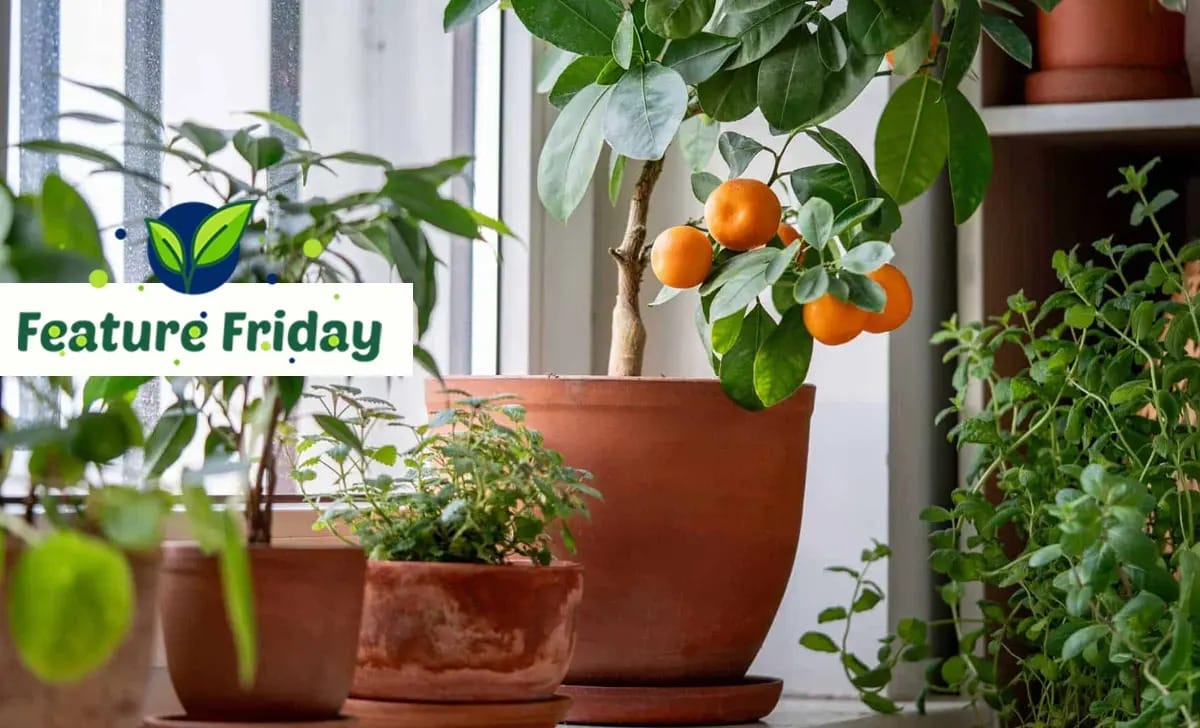
MEET TODAY’S FEATURELemon Trees in the Living Room? Yes, Please.Think citrus is just for orchards and orange groves? Think again. They’re not just houseplants; they’re experiences. Whether it’s perched on your kitchen counter, soaking up rays in your sunroom, or anchoring your patio oasis, an indoor citrus tree transforms the everyday into something extraordinary. They perfume your space. Because citrus doesn’t just grow—it glows. |  |
Hello, Plant Fam!
Welcome to the Feature Friday from PlantmyPlants—where we spotlight the showstoppers of the plant world. Today, we’re serving citrus—bright, juicy, and homegrown.
Because nothing says “I’ve got my life together” like fruiting trees in your breakfast nook.
Let’s explore the potted wonders that bring the Mediterranean indoors and turn kitchens into orchards.
___________________________________________
THE FEATURE
Zest, Bloom, and Tiny Fruit Galore
Indoor citrus trees are compact, charismatic, and fragrant beyond belief. They don’t just sit in the background—they demand attention in the best possible way.
Some of our favourite indoor-ready varieties:
🍋 Meyer Lemon – The sweet-tart queen with glossy leaves and springlike blooms
🍊 Calamondin Orange – Small but mighty, with adorable fruits and bold personality
🌿 Kaffir Lime – Culinary royalty, prized for its leaves as much as its fruit
🍈 Dwarf Lime (like Bearss or Key) – Cocktail essentials grown in your own home
🍊 Tangerine or Satsuma – Sweet segments, tiny stature, and surprisingly easygoing
Each one brings its own twist of sunshine—and each one is fully capable of thriving inside, as long as you tune into its needs.
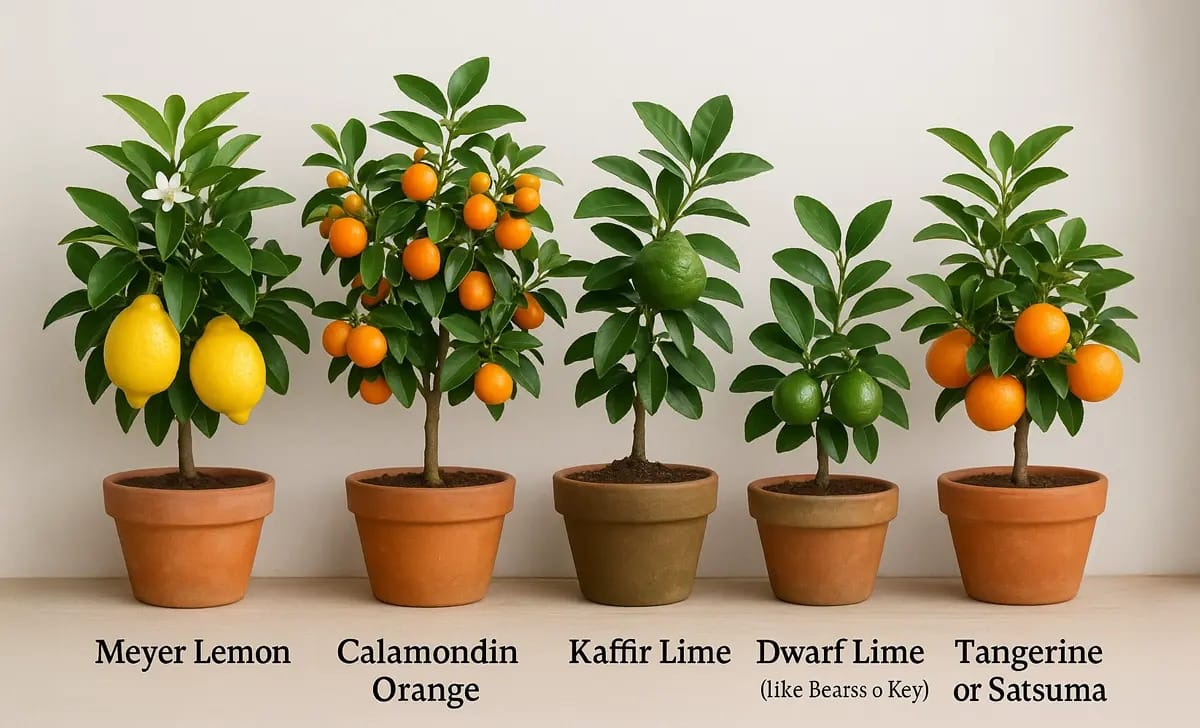
Styled Like the Sunroom of Your DreamsFrom Mediterranean Courtyard to Urban Kitchen Bringing citrus indoors is less about control and more about clever mimicry. These trees aren’t needy—but they are nostalgic. They’re craving light, warmth, and a little room to breathe. And when you get it right? They reward you with glossy leaves, snowy blossoms, and fruit that smells like summer on your hands. 🌞 Light – Citrus craves sunshine. South- or west-facing windows are ideal. No direct light? Add a grow light and keep it consistent. 💧 Watering – Moist, but not mushy. Let the top inch of soil dry between waterings. They don’t like wet feet. 🌡️ Temperature – They like it warm and steady. Keep them above 60°F and away from drafts or vents. 🌬️ Airflow – Still air invites mildew. Crack a window or use a small fan now and then. ✂️ Pruning – Keep them tidy! Remove suckers and prune lightly to encourage shape and airflow. These trees may be tiny—but their preferences are big. Learn their rhythm, and they’ll give back tenfold. | When Drama Hits: The Leaf Drop EpisodeLet’s talk about it. But here’s the thing—it’s usually fixable. 🍂 Moving the tree? Expect some leaf loss. It’s adjusting. Don’t panic—pivot. Indoor citrus has flair, but it’s not fragile. Small Tree, Big EnergyThese citrus cuties pack personality. They bloom unexpectedly. They fruit when you least expect it. They scent your entire room with a single flower. 🌿 They’re a statement plant. And yes—when you finally pluck that first lemon or orange from your tree? |
Style Tip: Create a Citrus Spotlight
Elevate your indoor citrus by giving it star billing in a sunny corner with a minimalist planter—think matte ceramic or warm terracotta to contrast those glossy green leaves and golden fruits. Pair with a woven basket base or a plant stand to lift it closer to the light and create visual height.
Surround with herbs like rosemary, thyme, or basil in smaller pots to build a Mediterranean kitchen garden vibe. Bonus? It smells incredible and looks like a slice of Tuscany on your windowsill.
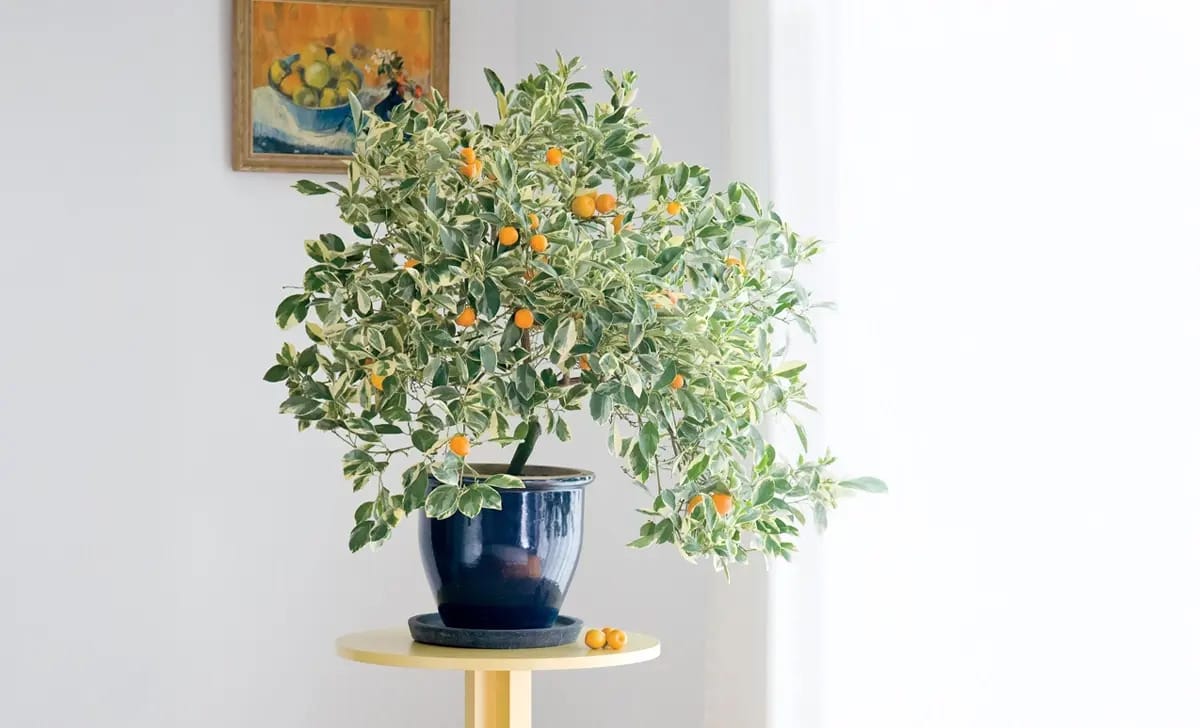
THE GUIDE TO CARE AND MAINTENANCE
In Depth Care Snapshot
Your Citrus Checklist:
✅ Bright light for 8–12 hours/day
✅ Deep but infrequent watering
✅ Monthly feeding in spring/summer with a citrus fertilizer
✅ Occasional leaf wiping to help with photosynthesis
✅ A little patience and a lot of sunlight
Bonus Tip:
Rotate your tree every 1–2 weeks so all sides get equal sun. This keeps the canopy even and the growth lush.
Citrus & StyleWhere to Place Them for Maximum Joy Location matters—especially when your plant smells like heaven and grows fruit on a Tuesday. Indoor citrus trees don’t just need the right care—they need the right stage. These beauties are natural scene-stealers, and where you place them can make all the difference in how they grow (and how much you enjoy them). The perfect spot balances sunlight, airflow, and a little lifestyle magic. Whether you’re crafting cocktails, cooking with citrus zest, or simply soaking in the scent of blossoms, these are our favorite places to let your citrus tree shine. 🏡 Kitchen corners – Perfect for reaching over and grabbing a lime mid-recipe Style with herbs like rosemary and thyme nearby for a full Mediterranean feel. |  |
What to Avoid
Because even the sassiest citrus has its limits.
Indoor citrus trees are surprisingly tough—but they’re not invincible. A few common missteps can leave your tree sulking, dropping leaves, or refusing to fruit. Here’s what not to do if you want those blooms and juicy rewards:
🚫 Low light 🚫 Overwatering 🚫 Cold drafts & hot blasts | 🚫 Skipping fertilizer 🚫 Ignoring leaf drop Give your citrus the right conditions, avoid these pitfalls, and you’ll have a tree that’s not just surviving—it’s thriving (and fruiting). |
 |  |
They don’t just sit in the background—they demand attention in the best possible way.
Water: Rhythm Over Routine
Where Consistent Care Grows Consistent Citrus
Citrus trees may have a bold, sunny personality—but when it comes to water, they’re surprisingly subtle. They don’t want random showers. They want rhythm. Not too much. Not too little. Just right.
💧 Think deep hydration over daily sips.
💧 Think consistency over calendar.
💧 Think of your citrus not as a schedule to follow, but as a plant to listen to.
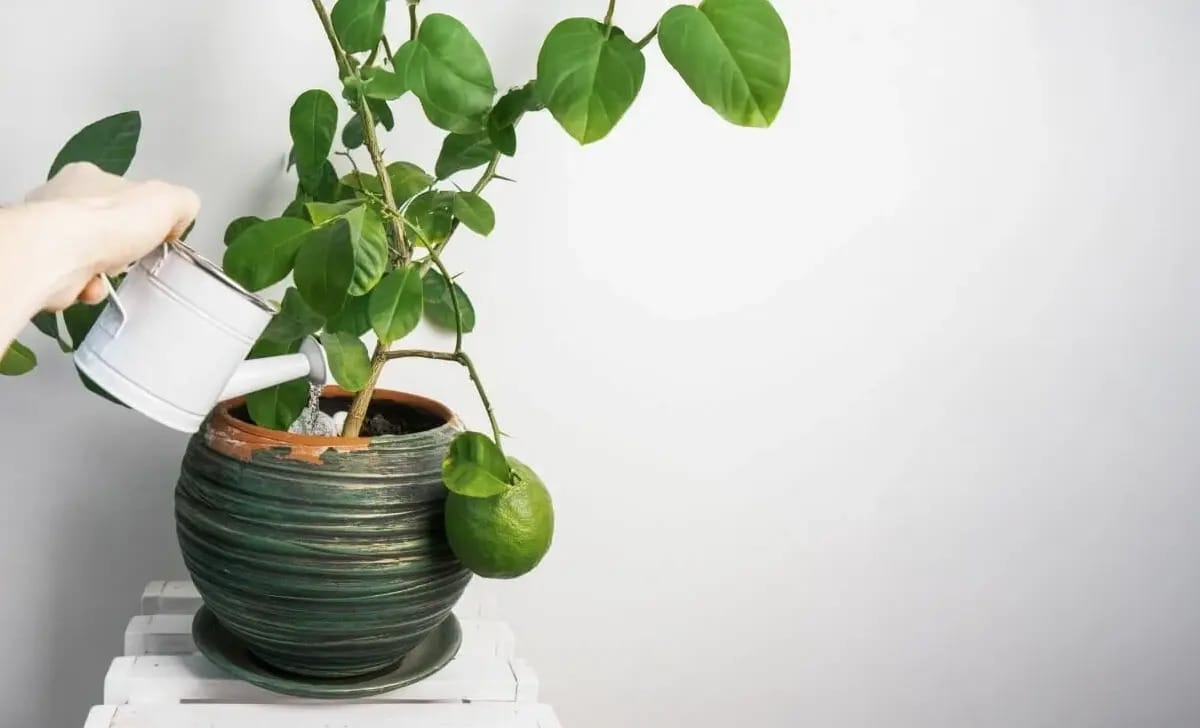
Sip, Don’t SoakIndoor citrus trees thrive when their roots are kept moist—but never wet. Your best bet? The Goldilocks ZoneNot Too Much. Not Too Little. Just Right. 🚫 Too dry? You’ll see curled, crispy leaves, or premature fruit drop. 🌿 Just right? Leaves stay firm, flowers pop, and fruit sets happily. This isn’t about getting it perfect—it’s about paying attention. Watering Tools & Tactics ✅ Use a watering can with a long spout to direct water to the base—no leaf splashing | Seasonal Watering Wisdom 🌞 Spring & Summer: ❄️ Fall & Winter: 🪴 Container tip: Smaller pots dry out faster. Terra cotta dries even quicker. Adjust based on your tree’s home. Drainage is a DealbreakerYour citrus might be chill, but her roots are not about sitting in soggy bottoms. Make sure your pot has proper drainage holes, and that water isn’t pooling in a saucer underneath. Pro Tip: After watering, wait 15–20 minutes and then dump out any extra from the saucer. Let her sip—not soak. |
In Summary:
🌿 Water when the top 1–2 inches of soil are dry
🌿 Water deeply, letting excess drain fully
🌿 Adjust with the seasons—not the calendar
🌿 Prioritize good drainage over guesswork
Because watering isn’t a chore—it’s a check-in. A chance to connect.
And when you listen to your citrus with care and consistency, it listens back with blossoms and fruit.
NURTURE THE NATURE
Prune & Propagate: Shape, Share, and Spark New Growth
Because a little snip can lead to a whole lot of citrus magic.
Indoor citrus trees may be compact, but they’re still full of ambition—and sometimes, a little chaos. Without guidance, they’ll shoot branches skyward, crowd their center, and steal their own light. That’s where pruning comes in.
And propagation? That’s your chance to multiply the magic and grow your citrus crew.
Pruning: More Than Just a HaircutThink of pruning as a love language for your tree—it's how you help it breathe, bloom, and bear better fruit. Why prune your citrus? When to prune: How to prune like a pro: What to expect:  | Propagation: Pass the Lemon, PleaseWant more citrus without buying another tree? Propagation lets you clone your current cutie and start a new sapling of your own. Can you propagate indoor citrus? Absolutely. How to propagate from cuttings:
Propagation tips: |
Pruning keeps your citrus looking good and feeling strong.
Propagation lets you share the joy—or start a citrus collection of your own.
And in both cases?
A little intentional care turns one lemon tree into a legacy of sunshine.
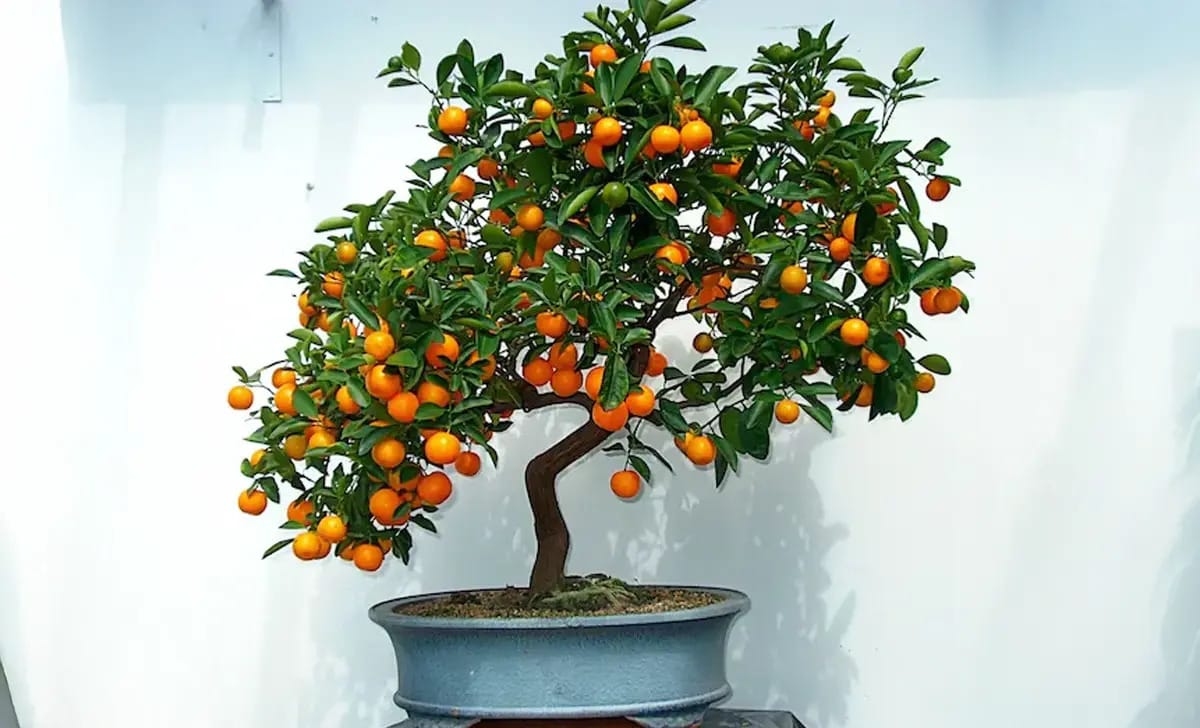
FINAL THOUGHTS
She’s not high-maintenance—she’s high-reward.
Citrus trees indoors remind us that nature doesn’t need acres to be abundant.
Sometimes, it just needs a pot, a little love, and a sunbeam.
🍋 You don’t need a grove to grow fruit.
🍊 You just need a sunny windowsill and a little curiosity.
🌿 You’re not just watering a plant. You’re nurturing joy.
So here’s your sign—
Grow that lemon tree. Start that orange sprout. Let your life get a little zestier.
The orange does not need to prove itself to the lemon.
Got a Citrus Crush?
Show us your indoor grove!
🍋 Tag @PlantMyPlants to show off your citrus corner
🍊 Use #FeatureFriday to inspire your plant-loving pals
🌿 Subscribe here for more juicy plant guides every week
Until next Friday, plant fam—
Stay rooted, stay radiant, and as always:
Stay juicy. 🍊🌿
See you next week, plant fam.
-The PlantmyPlants Team
Instagram @PlantMyPlants | Facebook
Reply